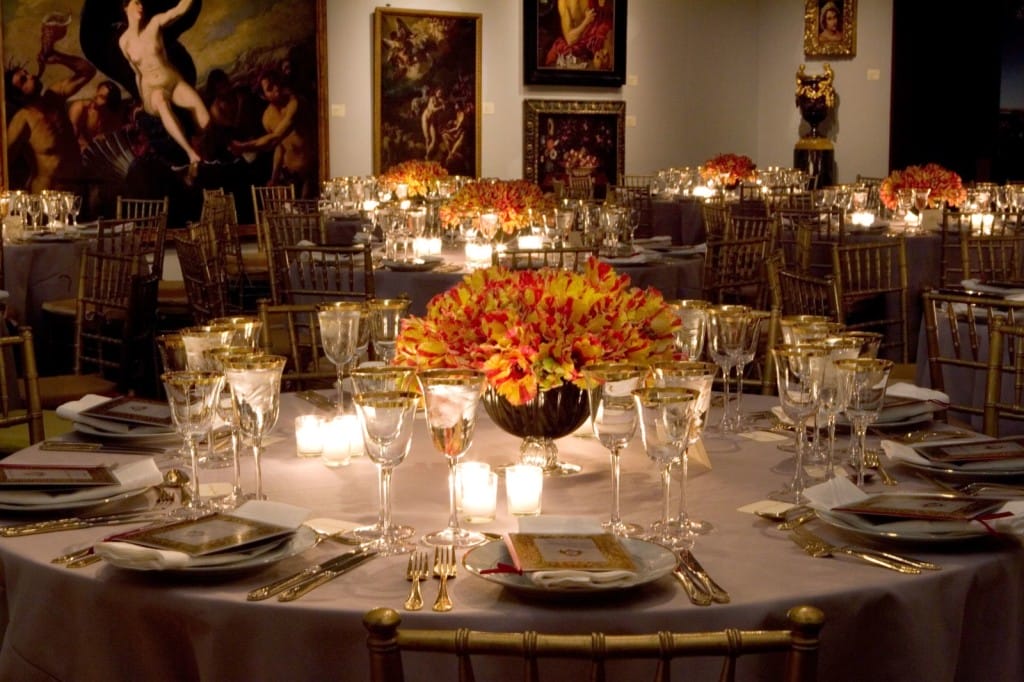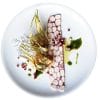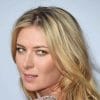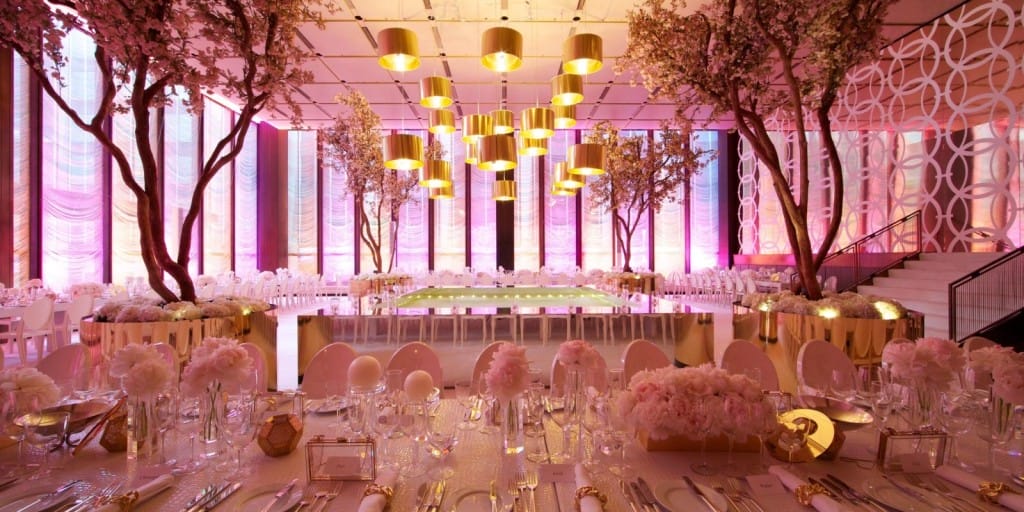
If this past month is any indication, the fashion world loves a good party. Whether it’s a new collection or product launch, a store or gallery opening the chic set is always celebrating something. With the bar set this high, it’s a challenge to keep each event as exciting as the last. Just as designers and labels revamp their look each season, while staying true to a certain aesthetic, the creative process behind their lavishly appointed parties is similar. And the creative geniuses behind said parties are Ron Wendt and Philip MacGregor, collectively Ron Wendt Design. As the go-to experts for some of fashion’s most high-end brands, including Chanel, Hermès, Cartier, Louis Vuitton, and more, Wendt and MacGregor have become masters in the art of event design. Here, the duo shares a look at what goes into each elegant fête and how to recreate this fashionable experience for your own festivities.
Harper’s BAZAAR: How did you get into event design?
Ron Wendt: For me, this all started when I was asked to be my babysitter’s ring-bearer when I was young. I loved it. I loved the pageantry of it, it felt so royal and so amazing and I’ll never forget my carnation boutonniere—I can still smell it now. I kept it forever. I was so proud of walking down the church floor and holding the little pillow and I thought, “This is the best thing ever.”
I have a background in garden design which is my first love. We got asked to do a few events in the city once we moved here and one thing led to another and we started building a business very slowly. We’ve worked very quietly. We’ve always worked for luxury brands, we’ve always worked well with them. We’ve built a trust with them, so now it’s just what we do. I mean, we still do weddings and everything but what’s great about working for a luxury brand is they always have a story to tell. Like, here’s what we want to celebrate: Look at these textures, look at these colors, and let’s build an event around this. Let’s make it feel like this is what it’s about. Making it feel like it’s cohesive and really built for it, it’s a fun challenge.
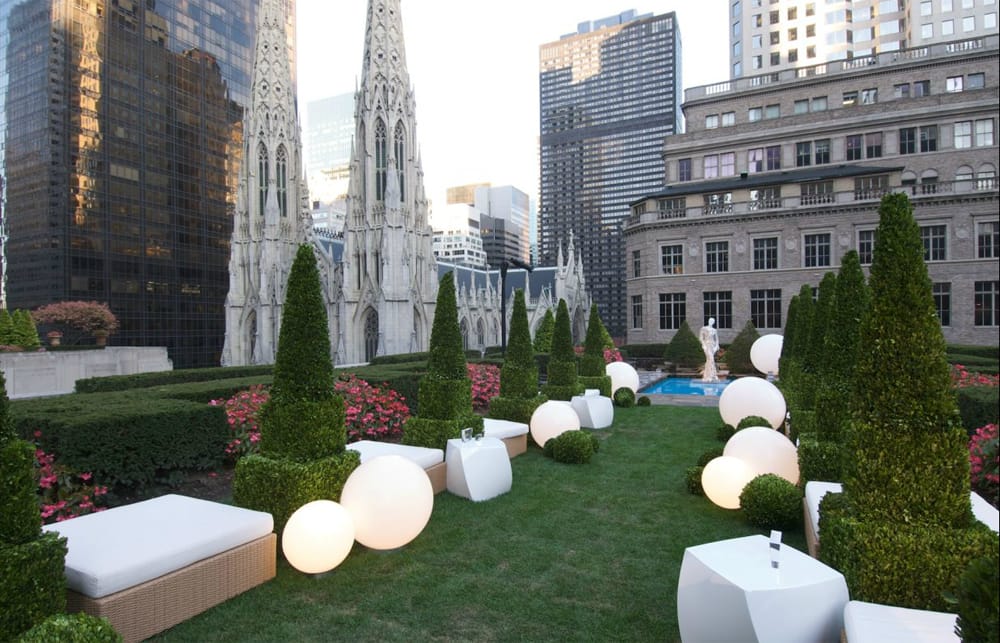
HB: Tell me about your design and creative process.
RW: Photos are a great place to start. Everything comes with a directive. There’s always an idea of what they want, it just isn’t always clear how that will translate into a dinner, or some sort of party, or decor and how many elements you can do. Because you want to think about what it is the guests are going to see and do. What are they going to experience? You want to be always thinking about what that experience is like.
Philip MacGregor: We recently did a party in Aspen for Chanel. They were hosting in the Aspen Art Museum and they came in and said to us, “As an inspiration think of our Café Society jewelry line.” So they gave us that to begin with and we designed the entire tent based on this 1920s speakeasy. It was great.
RW: The best part was these doors I designed like speakeasy doors. Not with the window, but I did black leather doors with brass hammered nails around the edging. Again, it’s just—that’s a very good case in point—it’s something each of those guests had to come into tactile contact with, and that sets memories in their minds. So it was kind of fun.
The best party in Aspen happened tonight… #BehindClosedDoors #CaféSociety
A photo posted by Ron Wendt (@ronwendtdesign) on
PM: So it started with their jewelry line, and we looked at their line and the period. We took that and sort of designed it around the room, so the guests have that experience and they’ll hopefully buy the clothes, buy the jewelry, etcetera. We approach parties much in the way a fashion designer approaches a line. We do start from inspiration.
RW: There’s a woman, there’s a look, there’s a history, there’s a story, something.
PM: Yeah, something. It could be something on the wall, it could be a flower. You know, flowers are our jewelry and we accessorize our parties with them. Travel has been a big inspiration for us, museums, the opera, the theater, everything. The expectations nowadays—people don’t expect that it’s just going to be a party, especially in the fashion world. They expect to be transformed the way a show transforms. It’s our job to bring that. And we try to make sure that, say, the Chanel experience is different from the LVMH experience and the Cartier experience is different from the Tiffany experience.
HB: When you work with so many different fashion clients and luxury brands, how do you keep everything feeling fresh and unique?
RW: First off, for each brand, they have their own point of view. You really get a sense of who they are. After you work with them long enough, you really understand how they feel and how they feel the brand is best represented. Once you get that done, that’s half the battle.
PM: We’re very sensitive about that, we would never repeat something. Because, as you know, they often entertain the same guests. We don’t want guests to come in and say, “I just saw this last night…” So that’s why we sometimes painstakingly source out things that are new, that’s why we might build eight custom tables for one party. It’s those minor details. And we do our homework. If it’s a new brand or an existing brand, we know where they come from and what’s important and we try to incorporate those brand messages within what we do as an event so it translates. It’s very subtle.
RW: And they’ll let you know if you’re not on point.
HB: Do you find that this ever inhibits your creative freedom?
RW: No, I think it really pushes you. For instance, we did a wedding a few years ago for a very, very dear and longtime client—it was her daughter’s wedding. It was in Southampton and she wanted it to look like every thing had come out of the house. I knew where she was coming from, I knew exactly what she was wanting, but the problem is that rentals and such, everyone has seen them a billion times and she was sick of them. So we were excruciatingly tough on the party rentals and choosing certain things and then going and sourcing other things to make everything feel totally different. And I realize why—one of her friends was from Ralph Lauren and she said to us, “This is like none other.” So we were thrilled about that.
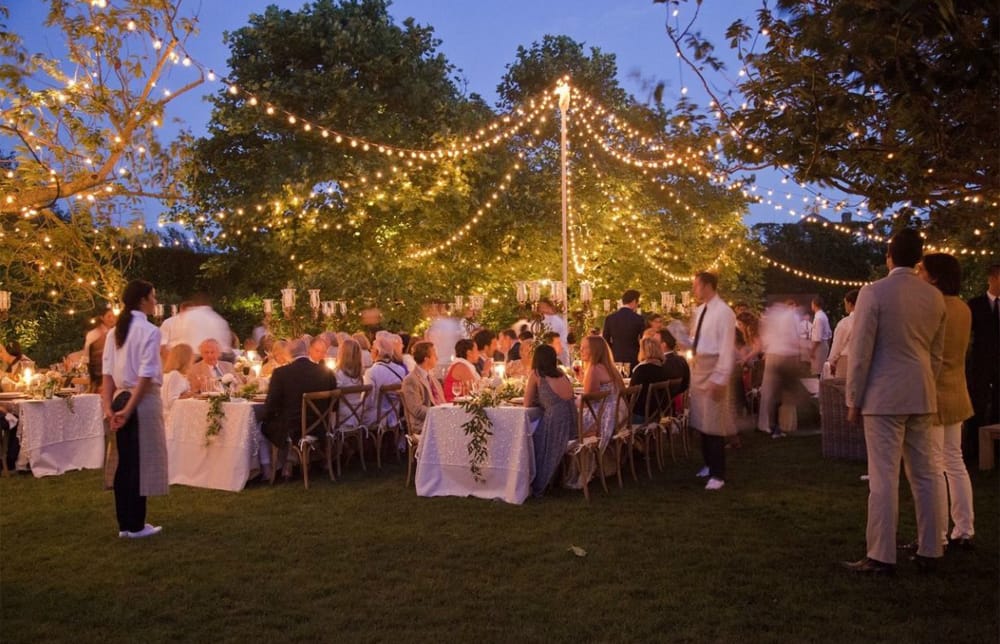
PM: But this is what we try to achieve all the time.
RW: Yes. It’s that attention to detail that would make you go crazy, and it does, I’ll be honest with you. Sometimes you just go, “Ugh!” But it pays off in the end, because anybody can order something from a party rental or an easy resource.
PM: Exactly. And there are so many people now that do what we do, I would say, but I think our experience gives us that edge to do something with effective knowledge and do it well. It could be the simplest thing, but we really try to achieve that personal level. It’s about the client, it’s not about us. We don’t want everybody to walk in and go, “I know who did this.” We really want to be a supporting character, especially when it comes to our luxury brands. It should never be about us.
HB: Do you have an event you’re proudest of or most enjoyed working on?
RW: That’s like asking me to choose between my children! I don’t know. Anything that asks you to be creative and push beyond is always a pleasure. It really is. To answer that, if I had another client that wanted to do another party like one I’d done before, I wouldn’t do it the same way.
PM: We’ve been very fortunate. We work with a lot of committees and there are a few charities we’ve been a part of, and the NYC galas and when they have been kind enough to repeat and invite us back—because every year it’s a new ballgame and new board members—we’ve had to reinvent the whole look, the whole feel. That’s been challenging, but really exciting because it gives us a year in the making to be creative and go, “What could we do different so that every guest would have a different experience than they had the previous year?”
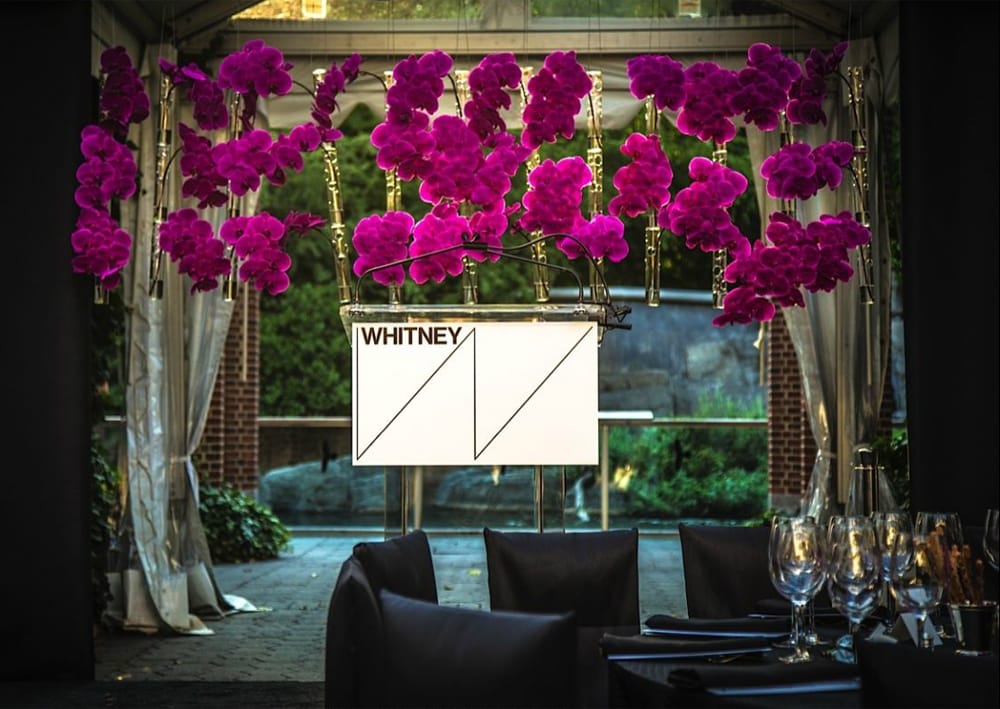
HB: That process sounds very similar to that of a fashion designer. You want to keep true to a brand or aesthetic in a way, but still have it be new every time.
RW: It does! The process is very similar.
PM: And we want to push the limit always. That’s the thing, I think, fortunately we’ve had the opportunity to push the limit with some of our clients because they trust us and then it’s turned out well.
Déjeuner à Montauk – parfait !
A photo posted by Ron Wendt (@ronwendtdesign) on
HB: Your background is in landscape design. How has that translated to this industry?
RW: Well, it’s space planning. Whether it’s interior and for night or exterior and for day, you know. I think about how you move through a space, I think about a destination point, which is always important. You’re not going to go into a room where you don’t see something that you want to reach, something that draws you in. Very often it’s the bar. Yeah, that’s rule number one when planning events: Always put the bar deep into the room. But there’s got to be something more engaging than that, too. It’s about bringing you through a space, getting you to pivot and turn and access and go deeper, take a journey.
HB: What sort of elements might you include for this purpose when designing an event?
RW: For this party we’re working on now, it’s in a large loft space. But there’s got to be a sense of entry. And so at the center-point we’re creating these draperies that will create a reception. You’ve come through the glass doors off the street, so you know you’re there and you’ve arrived, but there’s something further to move onto. Once you’re into that inner chamber, you’ll see everyone and then you’ll turn and through chain curtains you’ll see the rest of the party where you’ll go for dinner and dancing and it’s all set up in lounges and private lounges almost cabana style all around the dance floor. You’re not allowed to go there yet, but you can see it through the curtains. Very tantalizing, and yet you’re still in this other room where you’re having cocktails. So you get this sense of chronology as a guest, rather than just being in one big room. There’s a progression to the evening and a reveal.
HB: You’re an expert in floral design as well. How do you use flowers in your work?
RW: It’s a textural thing, for one. And flowers are so humanizing—especially in New York. When I was living in Austin (and I didn’t get this then, but I get it now) someone I knew had this little topiary and she said, “You know, this is really sweet here, but in New York this means so much more.” Like, look outside. It’s all hard geometry out there, everywhere. So layering textures and bringing in flowers just humanizes it. It’s organic material. It ties back to the earth. It’s a sensual thing, you know? You smell them, you touch them, you see them. They’re interesting to look at.
PM: And we’re choreographing them to be at their most perfect point. That sort of perfection doesn’t exist in reality, it only exists in this moment of the event or party or exhibition that we’re involved in.
RW: You have to plan and stage. We’ll arrange them at different levels so there’s always something to look at. Everyone’s got an opinion about flowers. But hopefully it all works and jives together.

HB: How do you choose which flowers to use for which occasions?
RW: It depends on the client. Whether they’re corporate or private. It’s really about telling the story. The great thing about an event is you can use a wider range of flowers, you can use almost anything that will tell that story for you.
PM: Also, if it’s a designer and they’re launching a new line, or a beauty brand and they’re releasing a new lipstick, we have that Pantone swatch and we’re in the flower market and we’re holding that exact tone to the different variations of flowers. Sometimes our directors forget that this is a natural element, so there has to be a little bit of play, but we do our best to get it close. We’re often taking a swatch of fabric or a photograph of a piece of art and walking around and saying, “Oh this would be beautiful with this or this.”
RW: Yeah, very often it’s color based. But it’s creating a contrast and balance with different shapes and textures.
A photo posted by Ron Wendt (@ronwendtdesign) on
HB: What’s your favorite flower to work with?
RW: Peonies. Who doesn’t love peonies? But, you know, dahlias are the peonies of fall. In spring there’s this little hyacinth called a grape hyacinth. It’s just this tiny little thing. It’s adorable, I’ve always loved it. And there’s nothing like lilacs in lilac season—that scent is divine. If we’re designing for clients though, peonies are fantastic. And luckily, we live in a day and age where we can get them from New Zealand or growers in other hemispheres.
Flowers a remarkable thing to work with. There are always new things coming out too, things we’ve never worked with. They’ll hybridize them. There was a garden rose that we had here the other day that was really contorted and probably, maybe to your eye you might think it ugly. But it just took all the textural elements that are naturally occurring in a rose and, for whatever reason, it hybridized in this weird way. But it was beautiful. Anything different is always a curiosity.
HB: Are there any flowers you don’t like?
RW: No. You know, I’m not a flower snob. I think that there’s always the right place and time for everything. Philip might be a flower snob…
PM: Maybe. I have more opinions about it. I’m not as open-minded about it.
RW: They’re these little jewels. Each unto itself. That’s why going to the flower market is so great. They’re all around and all looking at you. It’s kind of like walking through a garden.
HB: If you had to choose one thing that is the most important element or focus in event design, what would it be?
RW: I always try to think about, whether it’s a large event or small event, what are your guests going to have a tactile experience with? Whether it’s at close range looking at flowers or it’s the way a cloth feels, what will that be? What will they walk away that evening remembering? And then you sort of work backwards from there. I think that’s always important. Maybe it’s the sparkle of the crystal in a darkened room with just candlelight, but that crystal is going to create this beautiful memory. Or maybe it’s a vase of water with a floating candle. If you don’t have crystal, maybe it’s just that. There are so many ways to create romance, because it’s all from the natural elements—it doesn’t have to cost a million dollars. It’s just choosing the right things and telling a story carefully.
HB: Do you ever feel sad after an event you’ve worked on for a while is over?
RW: For us, the pinnacle of the event is that transitional moment from where it’s my work and I’m handing it off to the client as theirs. It’s not the end of the event because the people come in and they’ve had their evening and they’ve had their experience, and hopefully they’ve had a great experience and they’ll walk away that evening with all those memories. That’s a great thing. But for me, my release point is just before, when I look around and make sure everything is the way it should be and the way I would want it for myself and then send it off. And hopefully you’ve done everything to ensure everyone has that great experience.
PM: There is a little bit of that postpartum though. You’ve lived with an event for six months in preparation and finding things and being so meticulous and perfect about it and then it’s over. And unlike an architect or a fashion designer, where that lives on, ours is just a memory or a photograph.
RW: The nice thing that happens with hostesses though, is that typically that following week we’ll start receiving notes and phone calls and thank you’s, which is really lovely because you know it’s still living on in their mind and memory and hopefully with all the guests as well.
It’s sort of like with a really great movie or play, you leave it and you think, “I had a nice time.” But then the next day, maybe about 11 o’clock in the morning, you stop again and think, “Ah, that was really great.” Something comes back to you. Something really resonates with you and it lingers. So hopefully what we do does make a difference and creates that connection. We’re representing that host, so hopefully we’ve made that evening memorable on several levels.
HB: How can someone take the extravagant, elegant ideas from these luxurious events and apply them to their own festivities? Do you have any tips or key elements for throwing a stylish soirée or dinner party at home?
1. Lighting! Lower lighting in the dining room to its lowest warm glow so that your candlelit table becomes the central focus of the room.
2. Choose your tablecloth color carefully to relate the color story you want to tell, all the while remembering that it will be seen in lower light. For example, if you want a white tablecloth choose a crisp bright white rather than an off white which will read much more dull in lower light. Lavender can look grey in low light, navy can look black, etc. Do think a shade or two brighter.
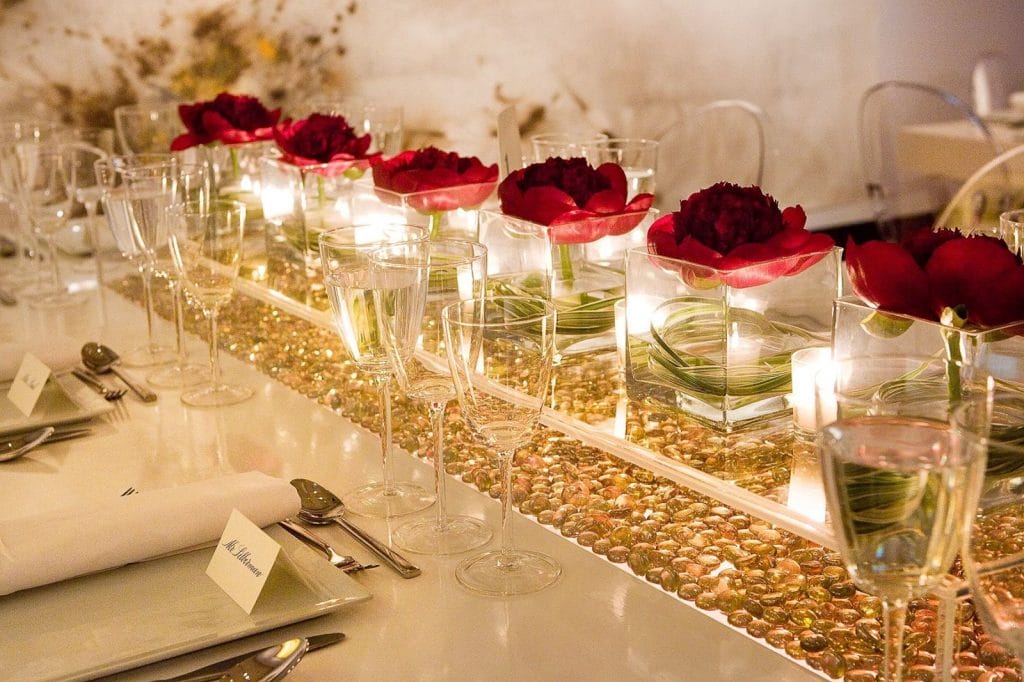
3. Think about what will sparkle and catch your eye. Silver candlesticks or crystal, or simple glass filled with water and floating candles can refract light beautifully! Don’t be afraid to mix and match antiques and collectibles with votives, creating a visual interest that flatters everybody, too.
4. Next is flower color, size and texture. Will they contrast or complement the tablecloth color and texture?
5. Try to create an arrangement that places flowers in front of all your guests. If it is a long table, then create smaller satellite arrangement to ensure all guests feel welcomed.
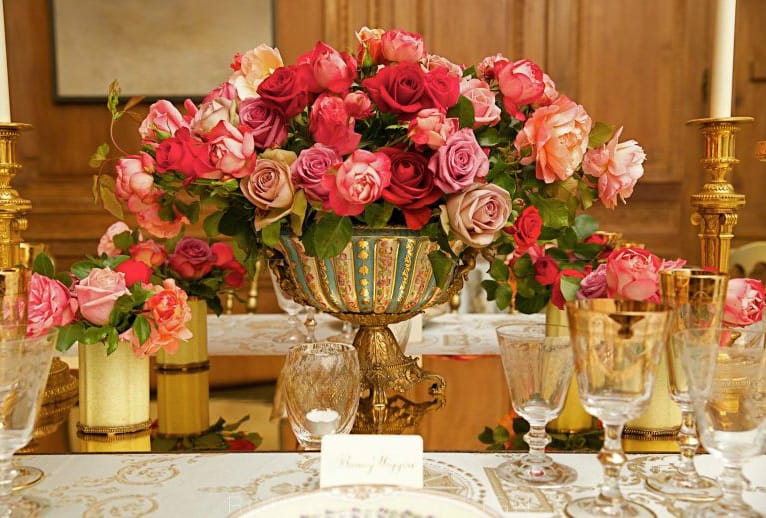
6. Get your flowers early! If they are fresh from the shipper, they will need to be conditioned (i.e. cut and left to drink and absorb water) for a day or two to fully open and look their best and most interesting for your guests. There is nothing more dull than to sit in front of a closed flower—it’s like sitting next to a guest who has nothing interesting to say!!
7. Make certain your chairs are comfortable. A well padded comfortable chair makes for a pleasant stay at the table. Try to give 24 inches of space per guest. Twenty inches is the minimum to politely “shoehorn” a crowded table.
8. The seating diagram. I always find it intriguing when a host creates a seating sequence because it reveals what he/she knows about their guests. Often if you are seated next to someone you don’t know it’s like unwrapping a gift to learn what you hopefully gave in common. Recently, I was at a fundraiser dinner of 30 guests at one long table and the host set up a lottery where guests drew folded paper numbers from a vase to arrive at their “placemente”. It was fun but it could have resulted in Russian Roulette!
